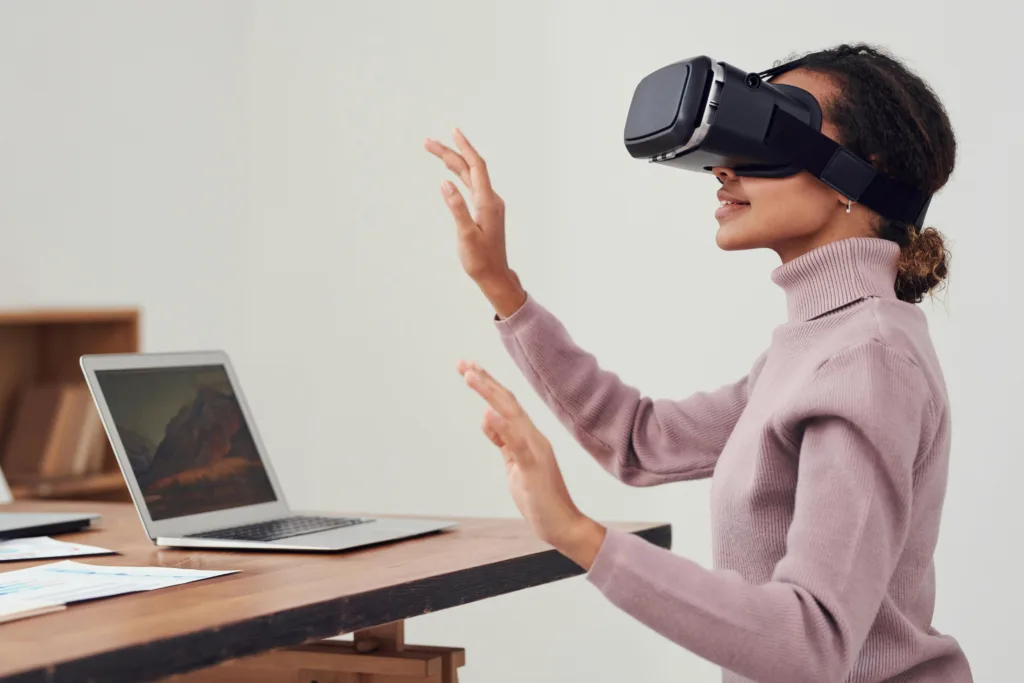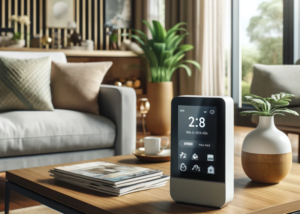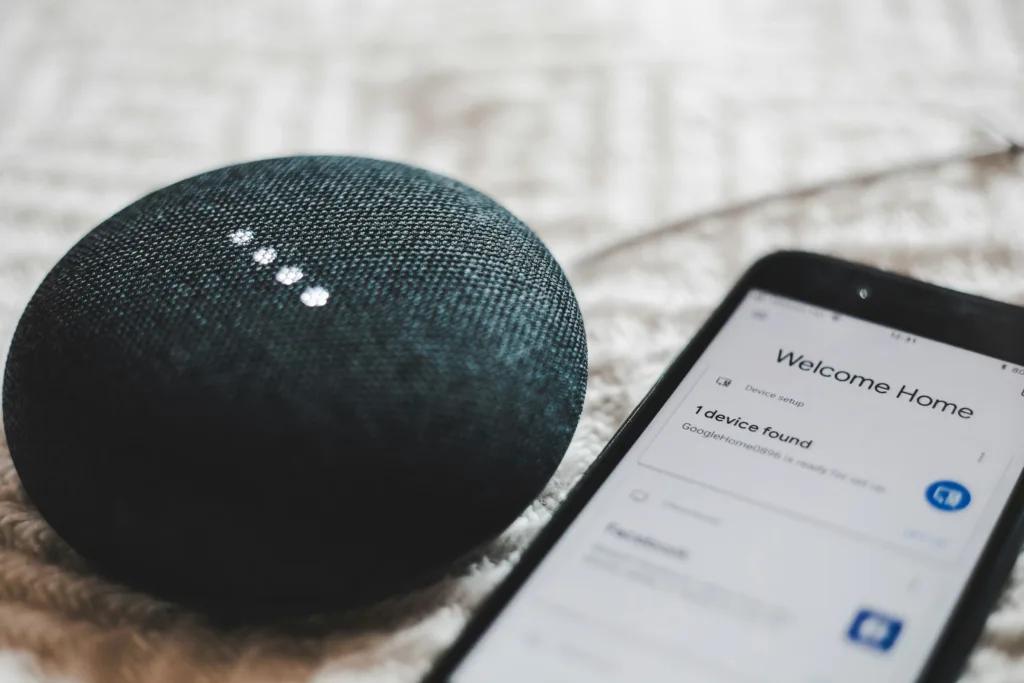Presently, Augmented Reality (AR) as well as Virtual Reality (VR) remains a component of almost all sectors and the frequent usage of devices. When it comes to the future of AR & VR towards 2024, the application possibilities remain huge and the pioneers are shaping innovative solutions in the fields of incredible experiences, performance uplift and disruptive communication. The present article will allow the reader to have renewed, well informed, and somehow exhaustive vision of the numerous domains where AR and/or VR technologies are used.

I am sure you heard about Augmented Reality (AR) and/or Virtual Reality (VR) systems Before. Their technologies have developed and evolved over the years and are now driven in numerous disciplines and common use commodities.
AR and VR in Healthcare
Training and Education
Both of the technologies are revolutionizing the field of medicine as they allow for the training of students in the handling of patients besides practices that require models for a better understanding of Human anatomy. Online technologies like Osso VR offer virtual surgical training that enables the learners to sharpen their skills in a virtual environment. A case of the Journal of Surgical Education revealed that those surgeons that underwent training using Virtual Reality showed a 230% enhanced performance as compared to a group of surgeons trained using conventional procedures. These virtual environments are replicas of real-life situations, it allows the students to practice and fathom real surgical experiences before performing real surgeries.
AR and VR both aid the cause of medical training because it avails in the center environment for the learners to practice on the models and learn the body organization without stressing the true specimens. Even solutions like Osso VR allow performing various kinds of operations in which participants sharpen their skills with no threat to patients’ lives. In a study that was conducted to show the efficiency of the virtual training the Journal of Surgical Education showed that the group of surgeons trained through the virtual reality got increased scores of 230% more than the other group trained in the traditional way. These are actually life-like models whereby the students carry out their practice and even gain the necessary morale for actual surgeries.
Patient Treatment
As for the treatment of patients, VR is applied to analgesia and psychosocial interventions. Information anxiety is less likely to require treatment since VR tends to divert patients’ attention from such factors as pain. For example, AppliedVR is a company that provides clinically tested VR to treat chronic pain and anxiety. A paper that was peer-reviewed and published in JMIR Mental Health revealed that VR therapy had the potential to cut down the pain that a patient experienced by half. Moreover, AR helps the surgeons in real surgeries by placing the required information over the surgeon’s view. Medivis demonstrates how AR can help surgeons visualize patient anatomy more effectively, leading to more precise and successful procedures.
AR and VR in Education
Enhanced Learning Experiences
AR and VR education technologies belong to the breakout technologies in education since they imply interactivity as the defining characteristic of education. Thus, activities such as virtual field trips, history reconstruction, and other forms of learning activities are much more effective. Talking about platforms with which students engage in the material, zSpace enables students to ‘’walk through’’ knowledge such as biology or physics, instead of reading it and forgetting all about it. According to EdTech Magazine, schools using AR and VR want to explain that the attendance level increases to 34% and the knowledge-enhancement level is also 28% higher. These technologies give rather an enthusiastic environment that augments the learning processes and makes them enjoyable.
Remote Collaboration
The application of AR and VR becomes relevant because the popularity of remote classes continuously grows; students and an educator can be members of one class regardless of their locations. Engage for example is an application which would allow the instructors to build a virtual world that could supplement learning and peer interaction among the students. Referring to the eLearning Industry, VR classrooms can effectively increase the learning rate by 22 percent in contrast to such distant learning systems. It therefore helps the process of continuing education especially for physical classrooms to other virtual classrooms because learning can actually take place irrespective of physical location.
AR and VR in Retail
Virtual Shopping
Many merchants and retailers are integrating this advanced reality and virtual reality technology to have more value addition on the final shopping outlook. Clothes, accessories, or makeup that customers are selling in some forms can be virtually tried on with the assistance of the use of Augmented Reality as a means of performing a trial on the outfit even as it is worn virtually. Some of the firms that have adopted AR include Warby Parker which enables the customers to ‘’virtually’’ test lenses and Sephora where customers can virtually apply makeup. As stated by Retail Dive, the use of AR has an impact on the rates: It can boost a conversion by 40 percent while return rates rise by 20 percent. This technology also aids in customer satisfaction whereby the consumers can be able to shop from the comfort of their homes.
Virtual Showrooms
It enables retailers to create stores where the customer can interact with commodities or service of their preference in what can be regarded as a mock environment. Such automobile companies as Audi advance the application of VR not only to the sales of their automobiles but also offer an opportunity to customize an automobile or have a feel of an automobile without having the physical model of the automobile thus reducing on physical stocks possessed. Israeli conclusions mentioned that 63% of consumers said they believe that VR can improve the shopping experience, known from Deloitte’s survey. These are rather effective virtual showrooms because the process of shopping is made to be more stimulating and educational in these instances.
AR and VR in Real Estate
Virtual Tours
Real estate has embraced VR in the sense that buyers can take a virtual tour of real estates from any part of the world. Firms such as Matterport offer an actual look at properties through 3D virtual tours, hence, reducing the amount of time and resources spent on property buying and selling. According to a study by Redfin, homes listed with virtual tours sell 31% faster than those without . This technology allows buyers to make more informed decisions without the need for physical visits.
Design and Visualization
AR is being utilized for interior design and property visualization, allowing clients to see how furniture and decor would look in their space before purchasing. Tools like IKEA Place let users visualize IKEA products in their homes using AR, enhancing the design process and customer satisfaction. According to Furniture Today, customers using AR apps are 11 times more likely to make a purchase . This technology streamlines the design process, making it easier for customers to plan and visualize their spaces.
AR and VR in Manufacturing
Training and Simulation
AR and VR are being deployed by the manufacturing companies for training of employees and conduct of simulations. With the help of VR training modules one can practice handling machinery without much risk or danger, and its functioning gets enhanced. AR can magnify instructions and safety information to workers and display it on their operating equipment. Porsche adopted the technology in using the AR glasses for the assembly line workers to enhance efficiency and quality. According to a business survey by Capgemini, companies, which are applying AR and VR in manufacturing lines, reported an average error clearance of 82%. They provide the organization with safe and efficient means of training their employees.
Maintenance and Repair
This reality in use is in line with the fact that incorporation of AR technology is improving maintenance and repair activities by offering technicians forms of details that include the status of the object and instructions for the subsequent steps. Today there are solutions such as Taqtile, where technical information about the equipment is combined using augmented reality which decreases time and increases the likelihood of correct repairs. From a report done from the Harvard Business Review, AR was seen to have the potential to reduce the maintenance costs by a third and increase the speed to complete tasks on a given post by a quarter. They make sure that the maintenance tasks are carried out adequately and in a most efficient manner.
AR and VR in Entertainment
Gaming
The gaming industry remains the most progressive in the implementation of AR and VR. Facebook’s Oculus Quest 2 is one of the most popular VR headset while augmented reality shows mobile games such as Pokémon GO are also a hit among the audience. The Statista report suggests that the consumption of VR games is likely to be valued at 23 billion US dollars in 2024 overall .
Virtual Events
AR and VR are again changing the entertainment sector since it is possible to conduct virtual concerts, events, and the like. Applications like Wave allows musicians to host concerts in which they perform in some sort of imaginary setting that the fans can also interact with. Related to this is the view that through VR it becomes possible for viewers to feel that they are part of the movie. According to a prognosis by PWC, the market for VR entertainment will be worth $6. Reaching approximately 7 billion by 2025 for Singapore’s population to attain this figure, numerous strategies must be undertaken in the country. These are new and unique ways of passing entertainment to audiences during virtual events.
AR and VR in Tourism
Virtual Travel
AR and VR are also impacting the tourism industry as tourists can get to go travel without even leaving their homes. Tourism consumers are able to look for various travel sites in one place and get an armchair tour in case they wish to tour a certain place. Some existing online services, such as YouVisit , are aimed at providing people with videos of the desired places and help customers make a decision. Skift also reported that destinations that provided virtual tours experienced a 40 percent rise in the actual tourist visits. With this technology the travelers can see the trips in advance and be able to better prepare for the trips.
Cultural Heritage Preservation
AR and VR are being harnessed for cultural purposes as a means of conserving the heritage and making the same known to the outside world. Animated constructions of the historical landmarks help people investigate and acquire the knowledge of the cultural assets which might not be easily accessible or threatened. Organizations such as CyArk employ 3D laser scanning and virtual reality with the aim of replicating sites and as a way of creating a record of historic structures across the globe. Another document from UNESCO revealed that the use of AR and VR to preserve the digital version of artifacts has helped to open up cultural heritage by 75% . Such technologies become particularly relevant when it is necessary to protect cultural values for the generations to come.
Conclusion
The probability of AR and VR increases significantly for industries that are on the verge of innovation as these technologies expand quickly. Across all industries ranging from healthcare, education, retail, real estate and many others, AR and VR have redefined the way humans engage with the environment. These technologies will therefore develop further and become used more and more in different industries creating more places for improvement.
References
- Journal of Surgical Education
- JMIR Mental Health
- EdTech Magazine
- eLearning Industry
- Retail Dive
- Deloitte Report
- Redfin
- Furniture Today
- Capgemini Study
- Harvard Business Review
- Statista
- PWC Report
- Skift
- UNESCO Report
This detailed exploration provides a comprehensive understanding of AR and VR use cases in 2024, emphasizing their transformative potential across multiple sectors.







